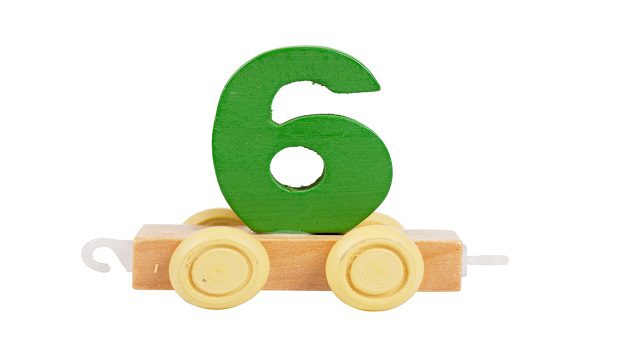Six Plus Holdem Strategy
- Six Plus Hold'em Strategy Games
- Six Plus Hold'em Strategy Tournaments
- Six Plus Hold'em Strategy Poker
- Six Plus Hold'em Strategy Poker
- Six Plus Hold'em Strategy Tips
Having already dealt with hand rankings and the starting hands in parts 1 and 2, it’s time to turn to the mathematical side of the game and see just how much difference the 36-card deck makes to pot odds.
- In Strategy In this article we will have a deeper look into low to mid pocket pairs and how they perform in the great game of Six Plus Holdem. Hands from pocket 6s to pocket 10s are the ones in question and many people tend to overplay those, mostly by calling a.
- In this series we are offering various strategy advice for short deck hold'em, also sometimes called six plus hold'em (or 6+ hold'em), including sharing tips from some of the pros who have found.
Let’s start with an open example:
Strategy: Smaller Edges, Different Perspective. Now what about the basic strategy? The good news is that the Six Plus Holdem winning strategy is a work in progress, so that means everyone is likely to make big mistakes at one point or another.
Example 1
Six plus Hold’em ($10/20, 6-handed)
Hero:910
Villain:QQ
Villain opens in seat 1 for $50, everyone else folds and you call in the BB. Pot = $110
Flop:7KA
Hero checks and Villain continuation bets$55, half the pot, making the pot$165 (let’s not discuss whether it’s a good play or not - I’m trying to make the maths simple for us all!)
We don’t know what the villain has, but we’re pretty sure we are only drawing to the flush here, so it comes down to pot odds whether we call or not (let’s ignore a speculative re-raise in this scenario!)
There are only nine spades in the deck in total (remember that the 2,3,4 and 5 are all out of play) and five of them are split between the board, our hand and our opponent’s hand. We don’t know that he has the Qs, so that’s only four in play for our purposes – so five cards left to draw to.
So, 5 of the 31 cards unknown to us will likely win, which is about a 17% chance of hitting, and we have two attempts at hitting it, so roughly 34%.
The other way of calculating this is to count one out, which is one in 31 = 3.2%, so…
- Lowest Rake 6+ Games Online
- Mobile & Desktop Six Plus Action
- PLO & NLHE Variants
In this instance, we are being offered 3-1 on the pot, and we are 2-1 to win, so it’s an easy call. Our flush draw will come in more often than not.
So, just as we saw in Part 2 that we are twice as likely to receive any particular starting hand, so the unofficial ‘Rule of 4 & 2’ changes and becomes…..the ‘Rule of 2&1’. Our %’s are easy to calculate quickly, if not 100% accurately.
With two cards to come in Texas Hold’em, we multiply our outs by four, if only the river is left then times by two. In Six Plus 2x and 1x is the easy way.
Also useful to note is if we had reason to believe our opponent was on trips, then his quite realistic chances of hitting a full house would have to be factored in were we playing Texas Hold’em – but in Six Plus a Flush beats a Full House anyway, so it wouldn’t be an issue. A difference, and a crucial one.
Let’s try another example, and see how straights play with pot odds and outs.

Example 2
Six plus Hold’em ($10/20, 6-handed)
Hero:910
Villain:QQ
Villain opens in seat 1 for $50, everyone else folds and you call in the BB. Pot = $110
Flop:78K
Hero checks and Villain c-bets $55, half the pot, making the pot $165 (again, keeping the maths simple)
So, first of all we have ‘nothing’ except an open-ended straight draw, and we can consider our opponent to have something better than this, so again we are drawing to win.
We have eight outs (the four 6’s and the 4 Jacks) and there are again 31 unknown cards, so roughly 26%. And we have the turn and river to hit them. So, using the ‘guesstimator’ rule of ‘2 & 1’ for practical play, we can say 2 x 26%=52% chance of hitting.
Just to check this….
- Lowest Rake 6+ Games Online
- Mobile & Desktop Six Plus Action
- PLO & NLHE Variants
This is even clearer than example one when it comes to pot odds: 3-1 pot odds and even money on a win with your straight.
However, if you factor in that your opponent might have trips – which now beats a straight in Six Plus Holdem, it brings the odds down a bit - though you’d have to actually ‘know’ he was on trips to let it affect your play here.
The even more interesting aspect which this brings up, as pointed out on PokerVIP, is that:
Basically, if you know that your opponent doesn’t have trips or better, you can just keep on raising, because if you have any kind of fold equity, you’re going to profit in the long run; and when you do get called, it’s as close to a flip as it will ever be, provided you’re not drawing dead.”

| Odds and Probabilities from the flop to the river | Texas | Six Plus |
| Making a flush from a 4-flush | 34.5% | 33% |
| Making a full house or better from a set | 33.3% | 54% |
| Making a full house from 2 pair | 16.4% | 26% |
| Filling an open-ended straight draw | 31.3% | 51% |
| Filling a gutshot straight by the river | 16.4% | 26% |
| Odds and Probabilities at the turn | Texas | Six Plus |
| Making a flush from a 4-flush | 19.6% | 16.5% |
| Making a full house or better from a set | 21.7% | 32.2% |
| Making a full house from 2 pair | 8.33% | 12.8% |
| Filling an open-ended straight draw | 17.2% | 25.6% |
| Filling a gutshot straight draw | 8.33% | 12.8% |
Six Plus Hold'em Strategy Games
OK, so these are the basics regarding pot odds and outs –for deeper strategy I refer you back to our earlier link where you can find all sorts of goodies which explain the differences in more details: stacking off, 3-betting ranges and much more.
- Lowest Rake 6+ Games Online
- Mobile & Desktop Six Plus Action
- PLO & NLHE Variants
More Top Rated Content
Articles
- Six Plus Hold'em Hand Rankings
- Six Plus Hold'em Rules & Strategy
- Six Plus Hold’em Starting Hands
Coaching Videos
- Optimizing Sleep for Poker Success
- Hypnotherapy in Poker
Those who follow the offline poker industry have noticed that this year the interest in Short Deck Hold'em, known as Six Plus Hold'em, began to grow exponentially. Basically, because of two very advertised events of the Triton Super High Roller Series. In its schedule, half of the tournaments were in fact played in this poker modality, and Jason Koon and Phil Ivey names emerged among the Asian players who won the Short Deck tournaments.
Online poker players can now play high stakes games of Short Deck Hold'em, but let's first study the rules and strategies.
Short Deck Hold'em history
Macau is known as the birthplace of 6+ Hold'em. The first information about it appeared in 2014. Quickly, the game became popular in Asia. The Short Deck Hold'em rules are simple and the tables offer more action compared to regular Texas Hold'em.
In 2015, Tom Dwan and Phil Ivey posted a video talking about Short Deck. 'Durrr' mentioned that he was bored of playing regular hold'em. After these comments, the term 6+ was now known in the West.
Six Plus Hold'em Strategy Tournaments
Some rooms added this variant to their lobbies, but only the iPoker network maintained it. Right now during peak time maybe 10 tables of 6+ Hold'em can be found in stakes from NL10 to NL100. But generally speaking, Short Deck Hold'em remained just as a purely Asian fun.
Short Deck Hold'em rules
Six Plus Hold'em Strategy Poker
There are three main differences between with Texas Hold'em (which is played with a 52-card deck):
- The cards from 2 to 5 are removed from the deck, for a total of 36 cards in the game.
- The hand ranking changes: set beats straight, and a flush is better than a full house.
- The A can be used for any straight both as a low or high card (as a 5 for example)
Strategy for Short Deck Hold'em
Even though the game became popular about 4 years ago, there has been not much development of theory or strategy of Six Plus Hold'em. As a matter of fact, no support software has been released for it. Therefore, even regulars have to play 'old school style,' relying on general experience and knowledge of poker mathematics.
The basis for building a strategy for Short Deck Hold'em is keeping in mind that because there are fewer cards in the deck, many probabilities change with the same number of outs. One out equals 3%:
Tips for playing Short Deck Hold'em
- No need to overplay top pair / top kicker - in Six Plus Hold'em the draws probability is significantly higher, so TPTK is actually not a very good hand here, especially in the last streets;
- Be aggressive with strong projects - this as a result of the previous paragraph. Semi-bluffs with a strong draw are more effective in Short Deck. You either immediately win the pot, or you will find yourself playing with excellent odds of improving your hand;
- Be careful with weak kickers - hands like top pair, two pairs and straight are not that strong in Short Deck. You should adjust your pre-flop ranges according to this. In comparison to traditional Texas Hold'em, you should be looking for 2 strong cards as kicker instead of one. That is if A8o is a good hand to raise pre-flop in a 52-card deck game, in Six Plus hold'em it's better to raise minimum with ATo;
- Call 3-bets with any pocket pair - since a set is now stronger than a straight and the probability to get one in the flop is 18%, any pocket pair is reasonable to defend against a 3-bet;
- Keep in mind the new hand rankings - play carefully with suited boards, and also straight draws. For example, if you have a set, you should only be afraid of flushes so straight draws must not concern you.
Odds table for Short Deck Hold'em
Where can I play high stakes Short Deck Hold'em games online?
Recently we added a new room that answers this question - PokerKing Asia. This new Asian poker application has Short Deck hold'em tables from $80 to $300. If you want to know more information about this room, please read our room review and FAQ.
We must mention that the action at the 6+ tables include very weak lineups. Is not common to see regular players at Short Deck, and in PokerKing Asia they are even rarer.
Any general questions about PokerKing Asia, please contact our team:
Telegram @iamlonga or Skype: rodion_longa
To request a test account or gaming account, make a deposit or have more information - write to Juan:
Telegram @wpdspanish or Skype: live:wpd.spanish



